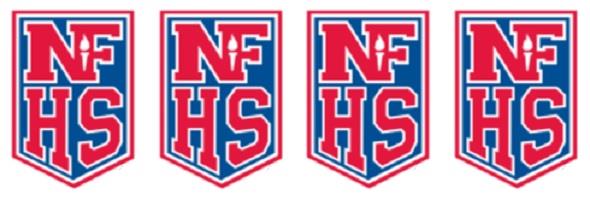
Truth About Sports Scholarships
March 30, 2018
 By Bob Gardner
By Bob Gardner
Executive Director of the National Federation of State High School Associations
Many parents are trying to live the dream through their sons and daughters – the dream of landing a college athletic scholarship by specializing in a sport year-round. Unfortunately, most of these dreams are never realized.
The odds of a sports scholarship paying for even a portion of a student’s college education are miniscule.
The College Board, a not-for-profit organization comprised of 6,000 of the world’s leading educational institutions, reports that a moderate cost for college students who attend a public university in their state of residence is $25,290 per year. The annual cost at a private college averages $50,900.
Meanwhile, the most recent data from the NCAA reveals that the average Division I athletic scholarship is worth only $10,400. More significantly, the same study shows that fewer than two percent of all high school athletes (1 in 54) ever wear the uniform of an NCAA Division I school.
Even if the dream is realized, parents likely will spend more money for club sports than they ever regain through college athletic scholarships. Thanks to the costs of club fees, equipment, summer camps, playing in out-of-state tournaments and private coaching, youth sports has become a $15 billion-per-year industry.
There is an option, and it’s a financially viable one: Encourage your sons and daughters to play sports at their high school.
In education-based high school sports, student-athletes are taught, as the term implies, that grades come first. The real-life lessons that students experientially learn offer insights into leadership, overcoming adversity and mutual respect that cannot be learned anywhere else. Unlike club sports, coaches in an education-based school setting are held accountable by the guiding principles and goals of their school district. And the cost of participating in high school sports is minimal in most cases.
While there is a belief that the only way to get noticed by college coaches is to play on non-school travel teams year-round, many Division I football and basketball coaches recently have stated that they are committed to recruiting students who have played multiple sports within the high school setting.
In addition, by focusing on academics while playing sports within the school setting, students can earn scholarships for academics and other talents—skill sets oftentimes nurtured while participating in high school activities. These scholarships are more accessible and worth more money than athletic scholarships. While $3 billion per year is available for athletic scholarships, more than $11 billion is awarded for academic scholarships and other financial assistance.
Without a doubt, your sons and daughters will have more fun, make more friends and be better prepared for life beyond sport by participating in multiple sports and activities offered by the high school in your community.

Century of School Sports: Guided by 4 S's of Educational Athletics
By
Geoff Kimmerly
MHSAA.com senior editor
October 8, 2024
The display above greets visitors at the top of our staircase to the second floor at the MHSAA office in East Lansing – a group of guests that annually numbers well over a 1,000 administrators, student leaders, game officials and several others who are invested in school sports.
We hope these four core values – the MHSAA’s oft-referred to “four S’s” of educational athletics – also lead our guests’ interactions in school sports as they return home to their communities across the state.
They are as follows:
SAFETY
- It's not enough to provide students the opportunity to participate. The health and welfare of participants must be placed above all other considerations. Parents can be confident that their children not only will be as safe as possible in school sports, but they will also develop habits that tend to encourage a lifetime of better health.
SCHOLARSHIP
- School-based and rooted in education, school sports are a supportive part of the school's academic mission. Minimum academic standards are set as a requirement for athletic participation, thus making activities a privilege.
SPORTSMANSHIP
- The environment at interscholastic events is shaped by the attitudes and actions of players, coaches and spectators. Lessons learned in gracefully dealing with adversity in athletics translate to the classroom, the home and the workplace. Good sportsmanship is a precursor to good citizenship.
SCOPE
- School sports embrace local roots. School events attract administrators, teachers, students and parents in one venue and can be the backbone of the community. Adopting reasonable, rational limits for school sports assures a sane and sensible, student-centered educational experience.
These values were coined by John E. “Jack” Roberts, the fourth of now five full-time executive directors who have served the MHSAA during its 100-year history. He introduced them during his first days on the job in 1986 – and as he noted in an installment of his “From the Director” blog in 2015, they’ve stood the test of time.
They drove the Association’s work during his tenure, surely before it, and continue to do so today – and we will delve into all four as we continue our storytelling of a “Century of School Sports” during this 2024-25 school year.
Previous "Century of School Sports" Spotlights
Sept. 25: Michigan Sends 10 to National Hall of Fame - Read
Sept. 25: MHSAA Record Books Filled with 1000s of Achievements - Read
Sept. 18: Why Does the MHSAA Have These Rules? - Read
Sept. 10: Special Medals, Patches to Commemorate Special Year - Read
Sept. 4: Fall to Finish with 50th Football Championships - Read
Aug. 28: Let the Celebration Begin - Read
PHOTO A display on the second floor of the MHSAA office outlines the four core values of educational athletics: safety, scholarship, sportsmanship and scope.

